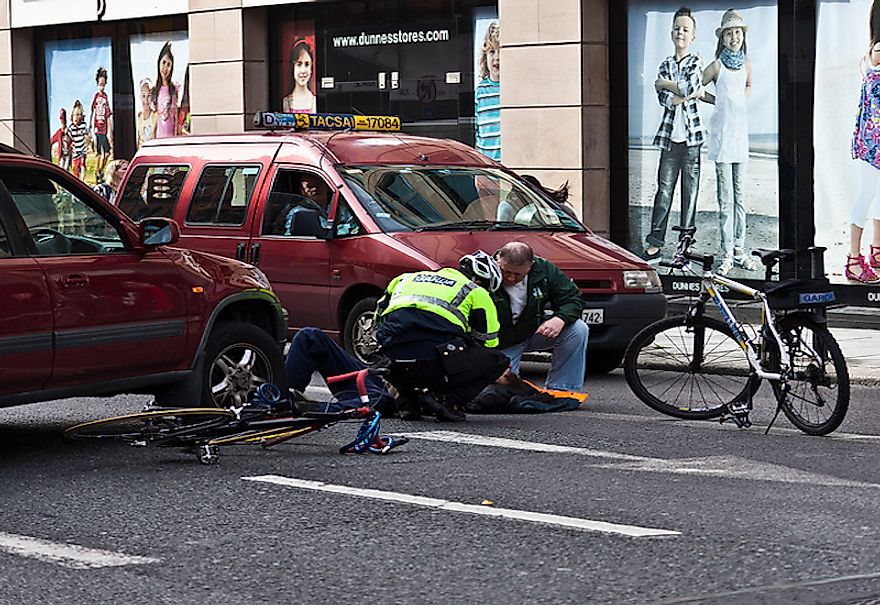Deadliest U.S. States For Cyclists

Reasons For High Rates Of Fatalities Involving Cyclists
Researchers, insurers, investigators and others have all looked at the data, but none of them can figure out why these states are so highly ranked when it comes to cyclist fatalities. The reason for this is that in each state, the respective municipality has a different set of procedures when it comes to reporting accidents. This fact makes it extremely difficult for anyone to draw conclusions about the different factors that could factor into why cycling fatalities are higher in these states.
A 2012 report from the National Highway Traffic Safety Administration (NHTSA) state that 25% of cyclists that were killed that year had blood alcohol concentrations in their systems above 0.08, which is what the legal limit for drivers would be. In some of these states or certain regions of them the roads that were constructed and the designated speed limits were not created to accommodate cyclists on the road. Other possible reasons for high cyclist fatalities in these states could be due to a lack of education among motorists and cyclists on the rules of bike safety and that the road laws needs to be enforced more strictly among motorists and cyclists.
What Can Be Done To Stop This?
Engineering And Constructional Modifications
There are a lot of rules, policies and other things that can be implemented to try and lower the amount of cyclist fatalities in these states. From an engineering and construction standpoint, a simple and short-term solution would be to simply widen bicycle lanes so that cyclists have more room when they are on the road. A long-term solution that these states could take is to adopt a policy that many major cities and metropolitan areas have undertaken called the complete streets policy. This policy has building roadways conforming to the nature of traffic in the locality. That way the busier an area is in terms of cyclists, the narrower the lanes would be for motor vehicles and the lower the speed limits would be.
Spreading Awareness
Another step that can be taken is to educate the public, motorists and cyclists alike, on the rules of bicycle safety. This way cyclists would know what to do to stay safe on the road and motorists would know what to watch out for to avoid accidents. A step that all cyclists can take to prevent fatalities and accidents is to always protect themselves when out cycling. This precaution would include wearing protective gear, like a helmet or even knee and elbow pads. Also wearing bright or reflective clothing at all times of day and using flashing lights on the bike at night so that motorists can see the bike and are more aware of where on the road cyclists are.
The Benefits Of Cycling
Currently, more and more people, especially younger people, are biking to get around as fewer young people are willing to spend their money on purchasing a car, the cost upkeep on it and paying for auto insurance. For younger people, especially in metropolitan areas, saving money is a major benefit of cycling. Another benefit of cycling is that it helps to improve health while doubling as a means of transportation. Cycling has been shown to strengthen and tone muscles, improve cardiovascular health, help to control diabetes, increase energy levels, help to manage and reduce stress, helps people to lose weight, etc. One last major benefit of cycling is that it helps the environment by reducing pollution and greenhouse gasses that would have otherwise gone into the environment. This also not only helps the environment but reduces health issues that people would get from air pollution. Cycling also helps to reduce noise pollution, especially in metropolitan areas.
Deadliest US States For Cyclists
| Rank | State | Average Annual Deaths Per Million Residents | 3-year Total Deaths (2010-2012) |
|---|---|---|---|
| 1 | Florida | 5.7 | 329 |
| 2 | Louisiana | 3.8 | 52 |
| 3 | New Mexico | 3.1 | 19 |
| 4 | Arizona | 3.0 | 59 |
| 5 | South Carolina | 3.0 | 42 |
| 6 | California | 3.0 | 338 |
| 7 | Oregon | 2.8 | 32 |
| 8 | North Carolina | 2.6 | 75 |
| 9 | Michigan | 2.4 | 72 |







